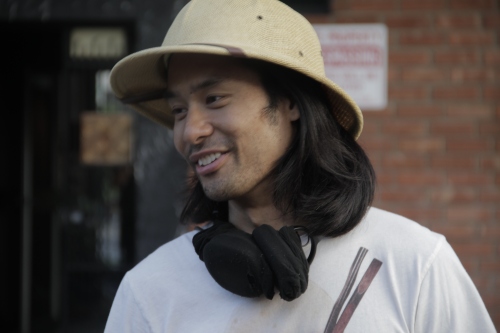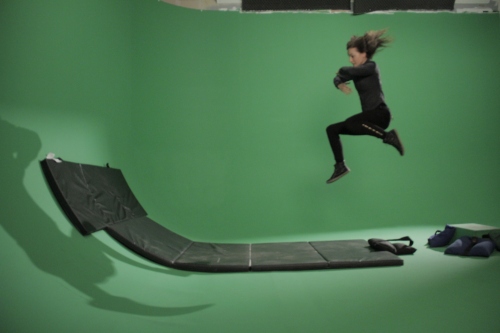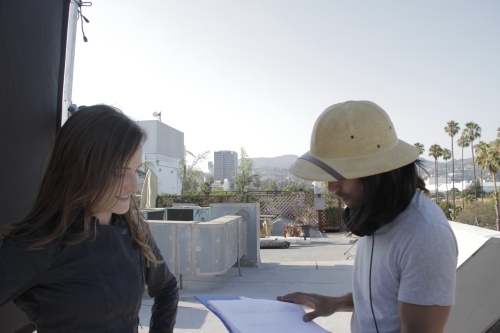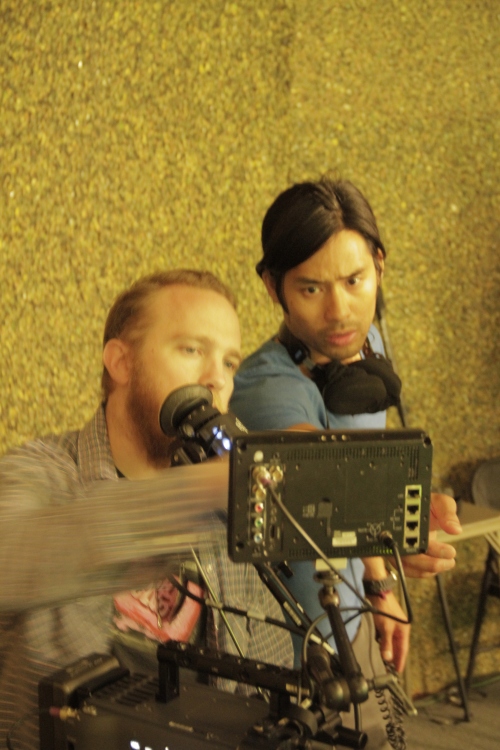5 Questions with ‘Outlaws and Angels’ Director J.T. Mollner
We catch up with our very first Filmmaker Spotlight subject, J.T. Mollner, as he prepares to premiere his independent western Outlaws and Angels at the prestigious Sundance Film Festival, coming to the Midnight block on January 25th. J.T. talks with us about his undying love for film and how it enhanced the western world he created for his first feature.
Outlaws and Angels: When Outlaws on the lam invade the home of an unsuspecting, seemingly innocent, frontier family to hide out for the night, an unexpected game of cat and mouse ensues, leading to seduction, role reversal, and ultimately, bloody revenge.
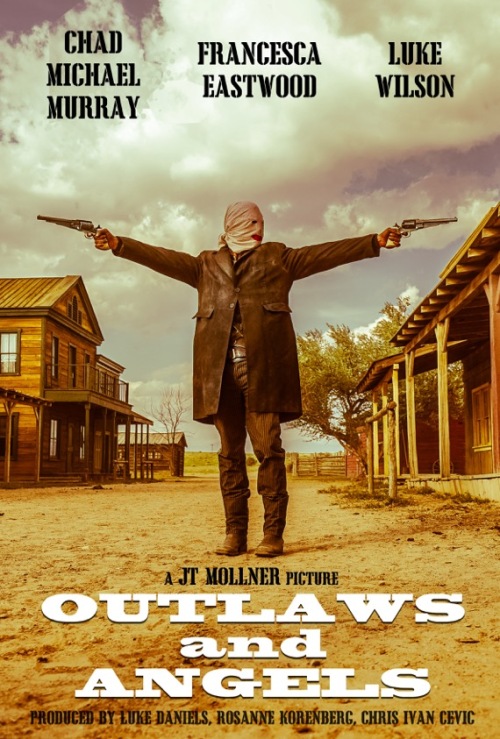
Tell me about your feature, ‘Outlaws and Angels’, which will be debuting at Sundance this year:
The Sundance acceptance was a huge surprise as well as a dream come true. I wasn’t ready to show them the film when the deadline hit. We had no choice but to send them an overlong, rough cut with no sound mix or color timing and I was sure we were going to get bad news. Then we got the news. Wow. We owe so much to those programmers out there. I really couldn’t imagine a more perfect place for this film to premiere. Midnight, Monday the 25th, Sundance Film Festival. Love how that sounds. And the most exciting part about it is that we will be screening our premiere at the library theater on a 35mm film print, something that didn’t happen at all at Sundance last year. We’re proud to be bringing Kodak back to Sundance.
I’ve always wanted to make a western – mainly so I could do all the things with it that I thought were missing from most of the westerns. It’s a revisionist western. A home invasion thriller that has derivations in story from films like Peckinpah’s Straw Dogs, Polanksi’s Cul-De-Sac, and Kubrick’s Lolita. It has the traditional western elements, but we break them down, and I like to think It plays more like a gangster film. Another thing I wanted to focus on was authenticity. Most westerns are too clean. We spent hours dirtying actors up, sweating them up, and rotting their teeth. Fluoride toothpastes weren’t being used on the frontier.
In our first interview, you referenced some filmmakers that inspire you such as Polanski, Bergman, Fellini as and described them as ‘outlaw filmmakers’. Now you having written, produced, and directed your new feature ‘Outlaws and Angels’ how has their work as ‘outlaws’ played a role in your feature if at all:
Their work hasn’t just influenced me, the film very simply would never have been made if it weren’t for those masters. And I certainly wouldn’t have dared go to the dark places in the script if it weren’t for the influence of the “Outlaw” elements of story in films like “Cries and Whispers”, “Repulsion”, and “La Strada”. There’s plenty of post-modern European cinema influence in this picture. It’s all there. Although my Director of Photography Matt Irving and I found our own look for the movie, our starting place was “McCabe and Mrs. Miller”, in my opinion Altman’s best flick and heavily influenced by European cinema as well. It’s because of Altman that I fell in love with the zoom lens, rarely used today as heavily as we used it in our film. But then we incorporated new things – hand-held in certain spots, for instance, something I’d never seen in a western. It gave us our own unique look. Matt and I decided to do long takes and minimal standard coverage. There is one 10-minute single take and the actors really nailed it. I was working with people who had tremendous talent and it made this very specific, visual style possible.
Being such a lover of FILM how did that provide an advantage or disadvantage making ‘Outlaws and Angels’
Did I mention that we didn’t just shoot on film, we are projecting on a film print at our Sundance premiere?! It’s so incredible that Kodak has made this possible.
Okay, back to shooting on film. It was never an option for me not to shoot this on film. I have a deep commitment to film as I think it represents more than just a certain look, it represents the very nature of cinema. Many filmmakers put too little importance on format. I think it wasChristopher Nolan (God bless him) who was asked by a studio head if story should trump all else, including format, and he said something like “No, if that were the case we’d be making radio shows. They are much cheaper”. Absolutely brilliant and totally right on! As filmmakers, we owe something to celluloid. We need to go to battle for it or it will go away. I could have made “Outlaws” a few years earlier if I had been willing to shoot digital but I stood my ground and it was worth the wait. I had to fight for it every step of the way, but to me it was just too important to compromise. We shot on Kodak 35mm film and Panavision cameras on the 2 perf format. It was heaven. Lorette Bayle from Kodak and Jim Roudebush from Panavision really got behind us. We wanted grain and we wanted texture. We shot with a package of all vintage Zeiss and Cooke lenses from the early 60’s. We got exactly what we wanted and it wouldn’t be the same film without the rustic, “old-photograph” look we were going for. There were challenges, like shipping back to labs in LA when you’re on location, and not having full resolution playback, but who cares? The benefits FAR outweigh the disadvantages. Film is king.
Tell me about how you assembled your team for ‘Outlaws and Angels’
Chris Ivan Cevic was the first Producer I brought on because we’ve been partners on shorts and commercials for nearly 10 years. He was involved from the very beginning, putting together our package so we could hit the streets. Chris and I aren’t just partners, we are friends, so we really complimented each other from the beginning. I like writing and directing, but I can’t stand the other shit associated with getting a film made. He likes the other shit, and he supports my vision but also isn’t afraid to give me his opinion when I’m going astray so we have always been a good fit. Then Rosanne Korenberg (“Half Nelson”, “Hard Candy”) read the script and flattered us by agreeing to come aboard and Produce, even though she had been hired as a VP at Miramax and wasn’t really interested in producing indies anymore. She helped us lock the first half of the financing and then we were ready to go out and get the thing greenlit. That’s where Luke Daniels at Tunnel Post came in. He’s hungry – he’s a go-getter. He really was the final piece we needed to make the film real. He got us the rest of the funding but it was contingent on a certain level of talent being attached, so we hired Chadwick Struck, an amazing Casting Director and spent about a year pitching the film to agencies and trying to get everything to line up. It all finally came together and we went to make a movie.Chad Michael Murray was an unlikely choice for the role of the seasoned outlaw, Henry. Gersh pushed for a meeting and I just fell in love with the guy when we met. He was so passionate, wanted to do something different than he had before, and it really translated to the screen. Francesca Eastwood auditioned for us, and then we had a great meeting as well. She’s just a natural born movie star so much charisma, such great instincts. You really can’t take your eyes off her when you watch the film. Both of them just gave that crazy level of commitment on set that directors dream about and they are so talented. All the other cast came together quickly. Ben Browder and Teri Polo were brought in by Gersh, who were so helpful and had a deep belief in the film. They are both brilliant actors and gave 110 percent as well. Then the other pieces just fell into place last minute, Madison Beatty, who auditioned for us and I was already a fan of because of her role in “The Master” came into play Charlotte and knocked it out of the park. Keith Loneker and Nathan Russel provide the much needed comic relief and really nailed it. Frances Fisher jumped in to play a supporting role last minute and just blew us all away. We were so lucky to get her. And then, of course, Luke Wilson was one of the last guys cast. Great guy. He really bought in, totally trusted my vision, and was a pleasure to work with. The whole cast really brought it, took it seriously, and had a sense we were doing something special. I feel grateful.
The cinematographer was an interesting thing because I’ve always worked with the same guy,Gavin Kelly, until this project. Gavin and I were a great team, but he had another project scheduled at the same time and I was not looking forward to working with someone new on the first feature. Our Line Producer Mykel Denis, turned me on to this guy Matt Irving. I was a fan of a film he shot years back called “Groove” and also liked his most popular film “Waitress”, however, I was concerned his signature look wouldn’t fit what I was going for. We got on a 2-hour long film-geek call where we talked movies and I knew he was the right guy. Matt’s a genius. We spoke each other’s language. Couldn’t have gone smoother on set. He bought into the vision and we almost always wanted the same thing for each shot. He knew exactly what type of film we were making and it shows when you watch the footage.
Now that you’ve completed your first feature are you going to turn your short ‘Flowers of December’ into a feature? What’s next?
The easy answer is yes. Now that we’ve got a distributor for “Outlaws” and we are getting the theatrical release that was so important to me, I’m already thinking about the next project. It’s contemporary, takes place in West Texas, and is titled “18 Wheels and a Dozen Roses”. It’s a dark love story, somewhere between “Leaving Las Vegas” and “Midnight Cowboy”. “Flowers in December” is a different story but takes place in the same world.
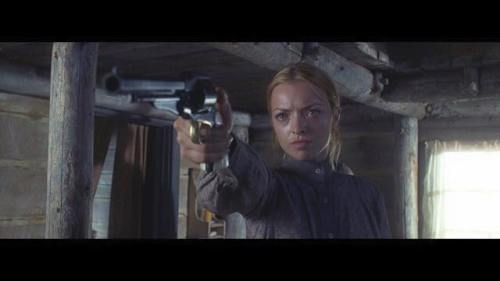
Francesca Eastwood in ‘Outlaws and Angels’
Source: No Remake Pictures
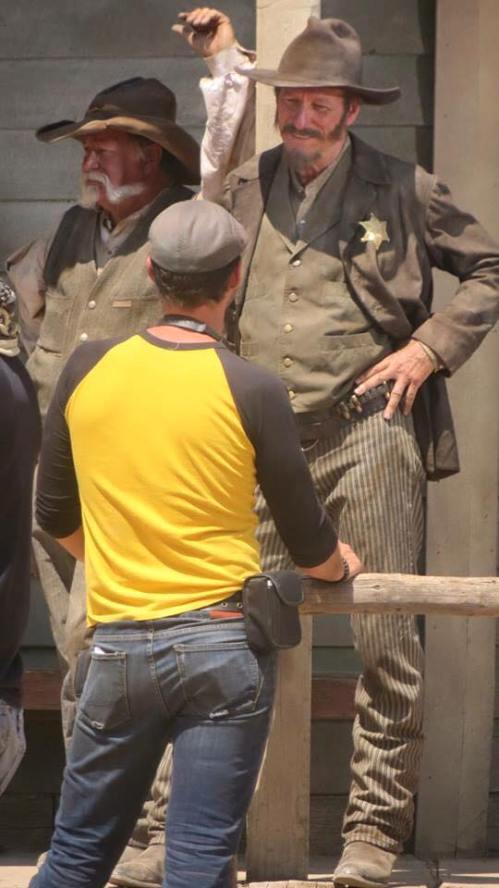
JT Mollner and Duke Mollner on the set of ‘Outlaws and Angels’
Source: No Remake Pictures
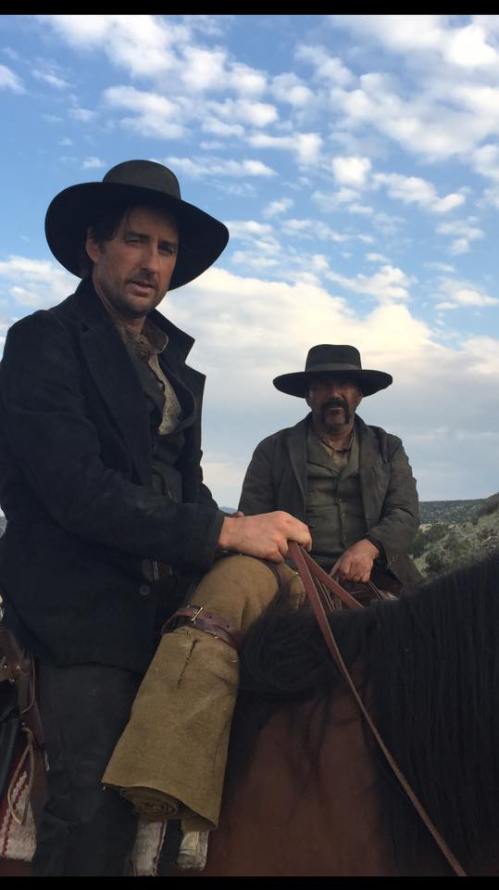
Luke Wilson and Steven Michael Quezada
Source: No Remake Pictures
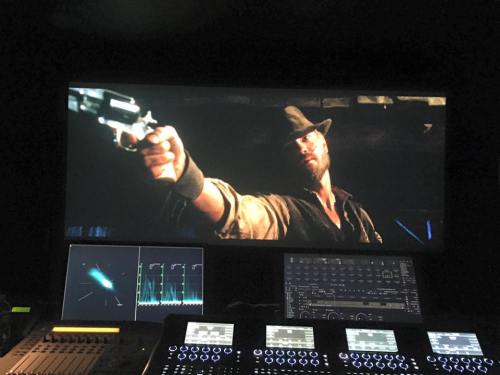
Chad Michael Murray
Source: No Remake Pictures



